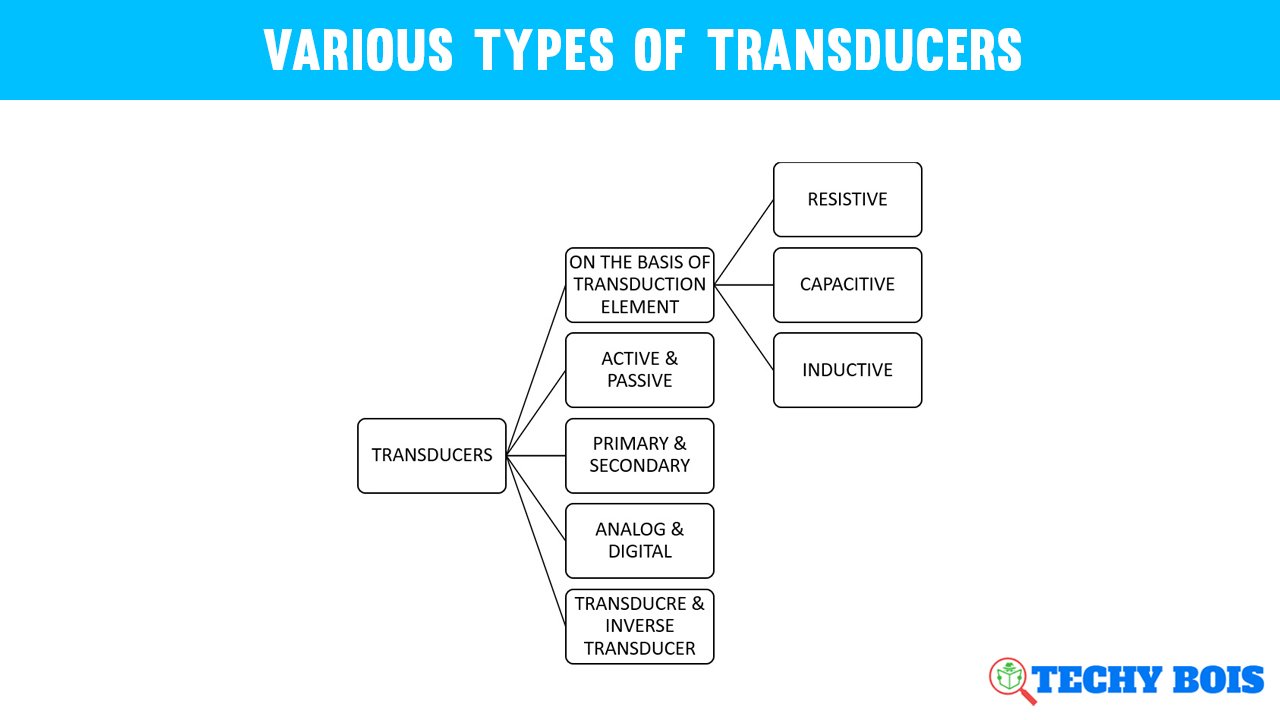Various types of Transducers:
The transducer is a device that is used to convert a non electrical quantity into electrical quantity.the sensitive material is included in the transducer.It composed of many types namely capacitive,inductive,and resistive transducer.This transducer are always keep the current flows in the same procedure.

Let us know the types of Transducers
1.primary and secondary transducer
2.passive and active Transducer
3.Analog and digital transducer
4.Transducers and inverse transducer
In this subject manner we saw the following table
Depends upon the principle of transduction:
The transduction are classified into many types there are Resistive,inductive,capacitive this transducer are converted into resistance,inductance, capacitance respectively.these are boardly category of piezoelectric,thermoelectric,magnetorespective and optical .
Primary and secondary transducer:
The primary Transducers are working in the reflection and refraction of current density.It will detecting or sensing because the functions are being rotated by the machines.we are now know about the output of voltage with an example
The load cell consists of a square shape box and consider the current.tge dot lines are inside the diagram.force is directly proportional to the rate of change of linear momentum it will happen in the box.during the gauges strain is observed.The strain particles are restored in the load cell.
Primary and secondary transducer are useful to the shell.
Passive and active Transducer:
Passive Transducer:
The external part of the power supply is functioning passive transducer.this external power supply is called auxiliary power supply.
The example of an passive transfer material is equal to the connection of external point charge.
Active Transducer:
This is always included in internal power supply to work in the active Transducer.the property is initiated by the power supply of measuring the internal power supply.
Let us saw about the details in the following figure

